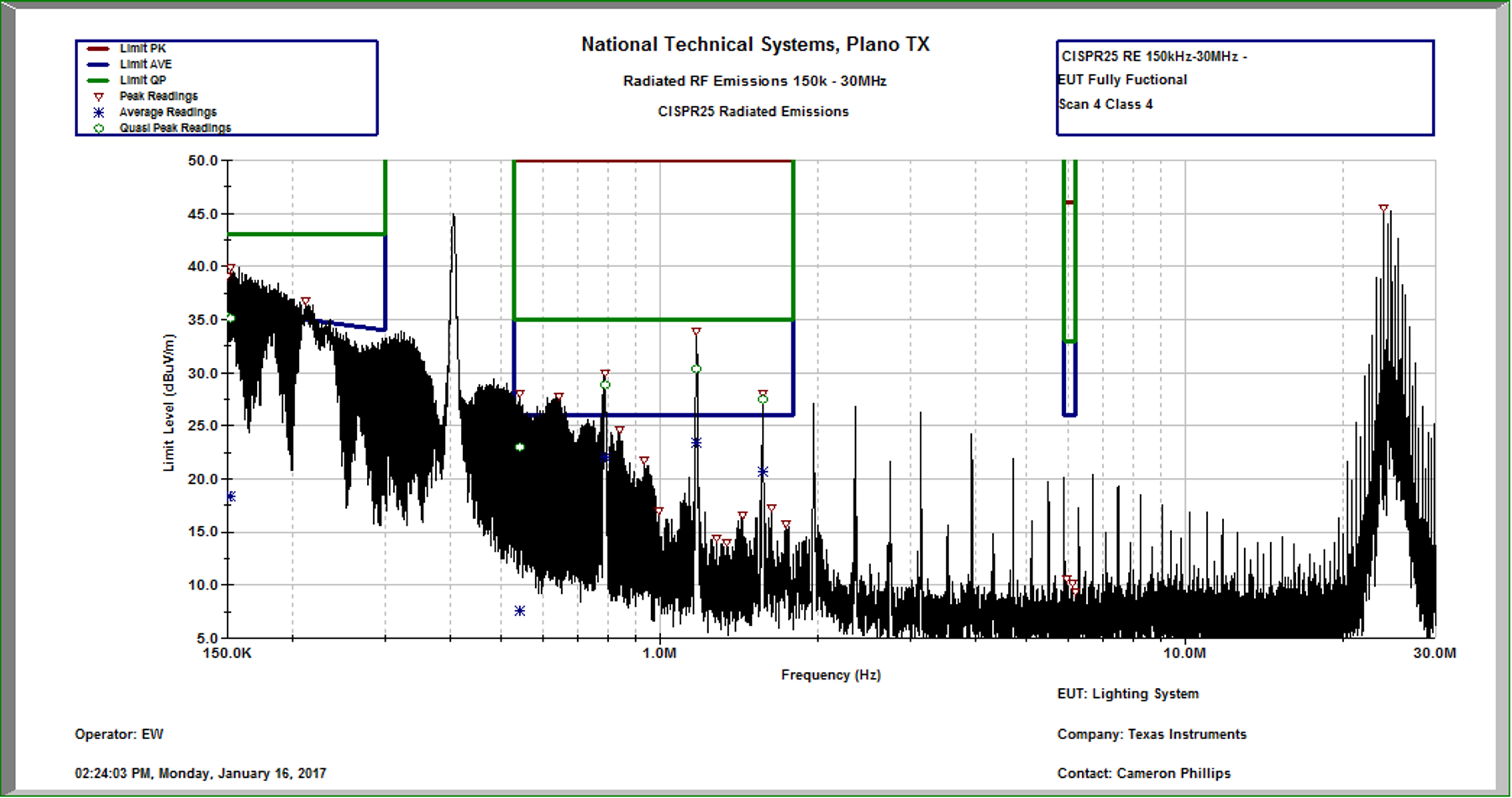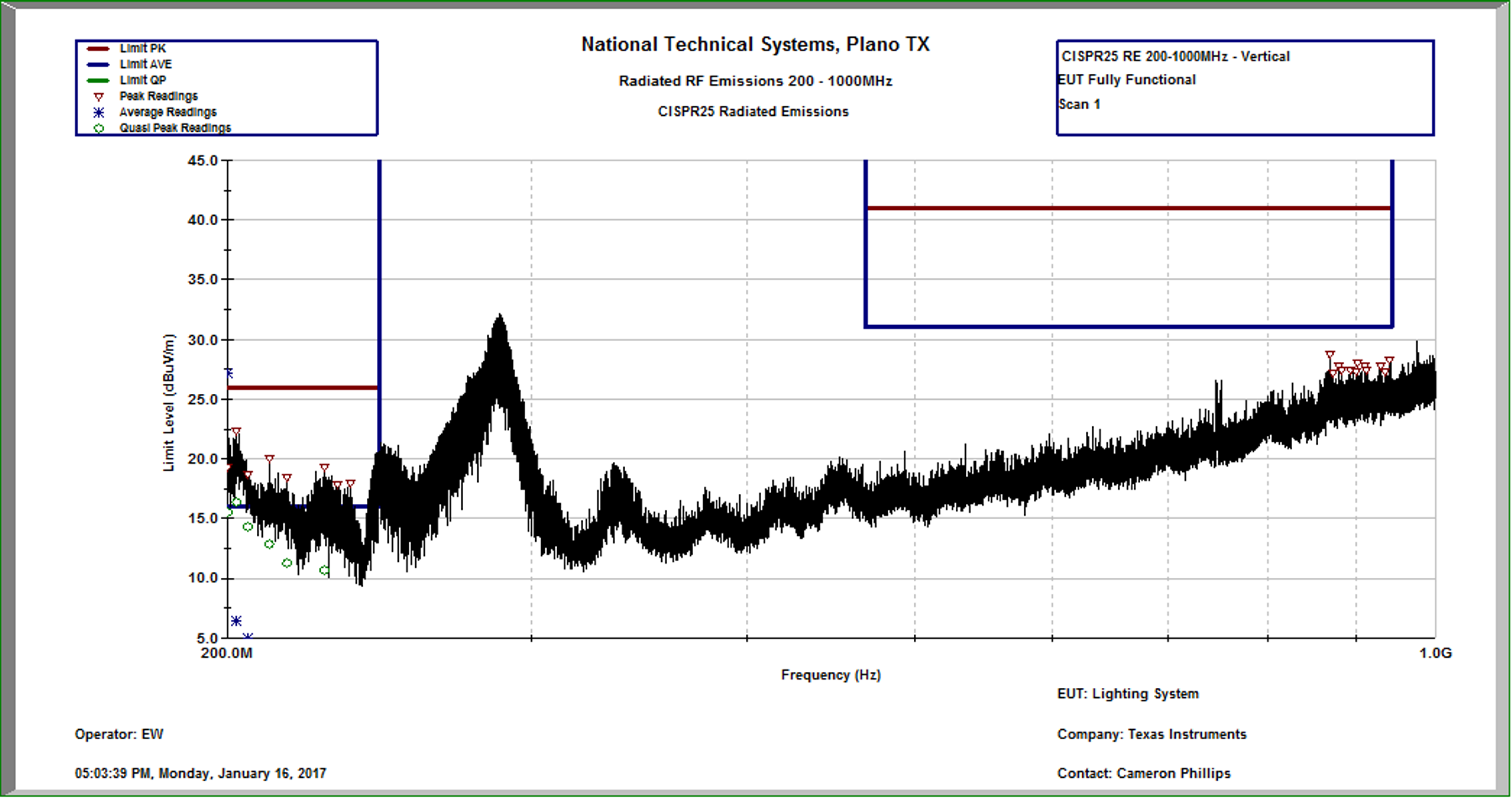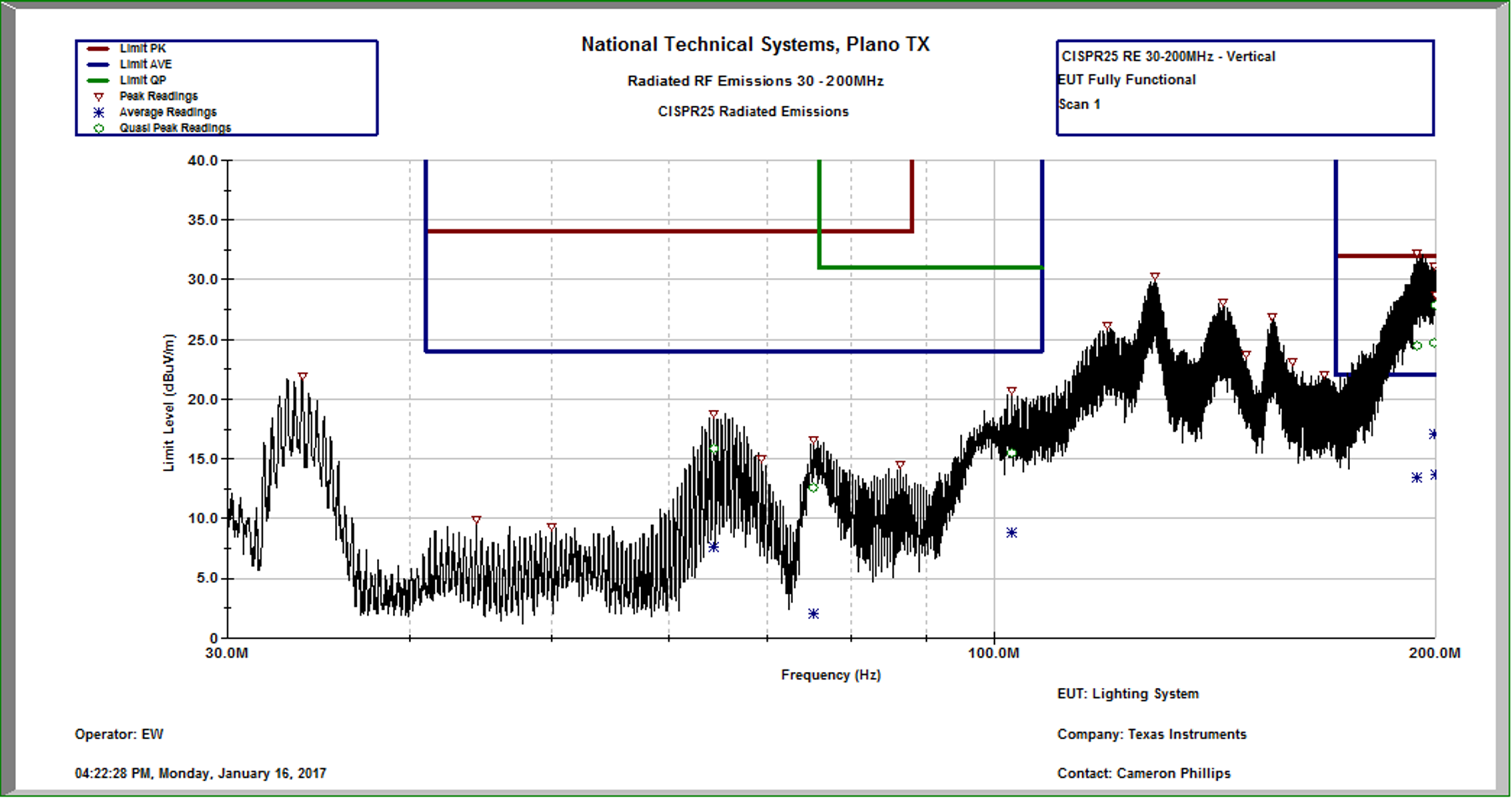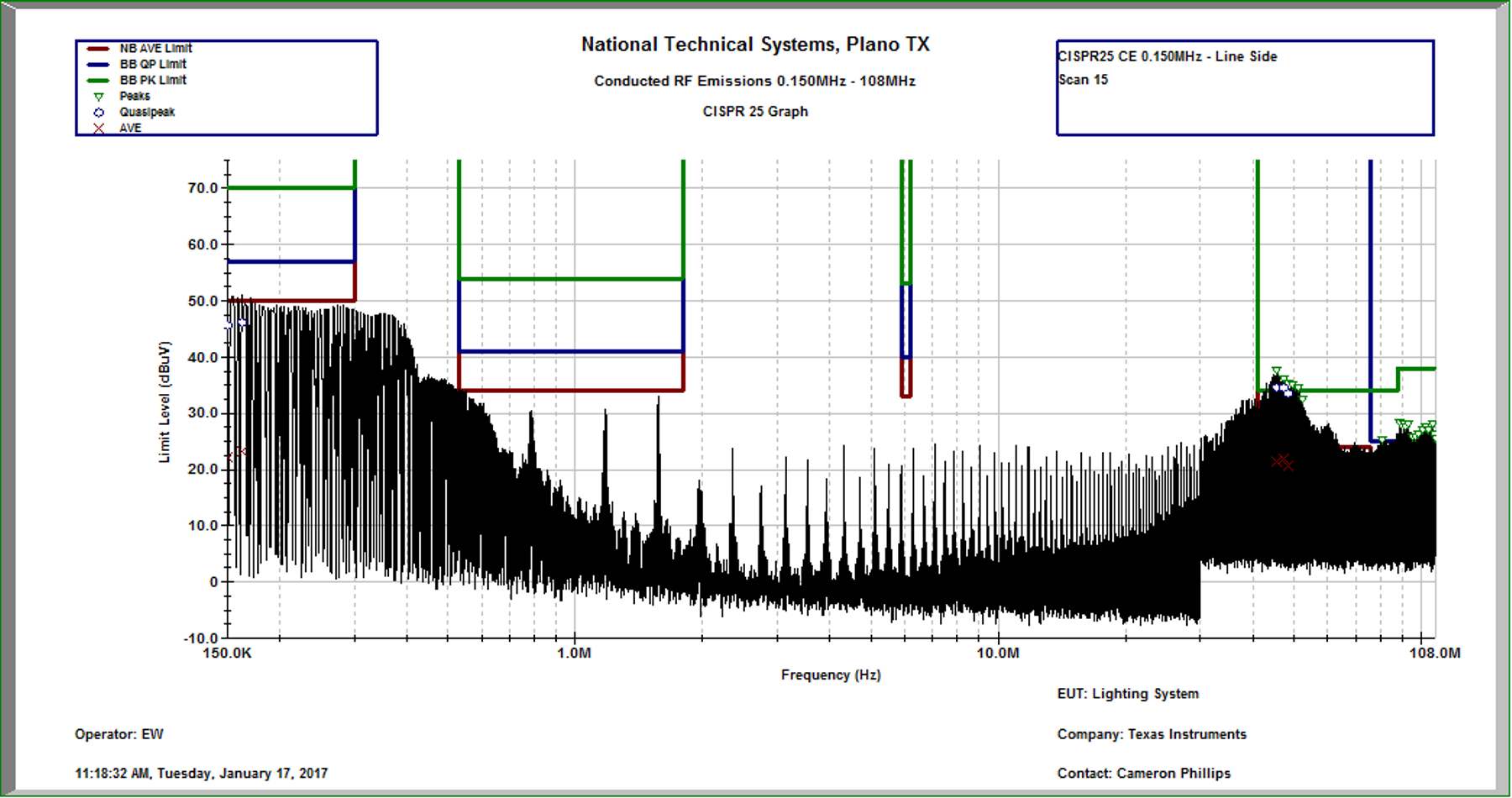TIDUCL3 February 2017
- 1 Overview
- 2 Resources
- 3 Features
- 4 Applications
- 5 Design Images
- 6 System Overview
-
7 System Design Theory
- 7.1 PCB and Form Factor
- 7.2 Optimizing Board Performance Based on LED String Voltage and Current
- 7.3 Switching Frequency
- 7.4 Output Overvoltage Protection (OVP)
- 7.5 Current Monitoring (IMON)
- 7.6 Thermal Foldback
- 7.7 Clock Generation (PWM)
- 7.8 Onboard Supply and Setting Duty Cycle
- 7.9 Buffering, Averaging, and Filtering
- 7.10 Boost Converter
- 8 Getting Started Hardware
- 9 Testing and Results
- 10Design Files
- 11Related Documentation
- 12About the Author
9.3 EMI Testing
In automotive lighting, EMI is a problem. Therefore, this TI Design was made so that it can be CISPR 25 compliant. In testing it was found that the design is CISPR 25 Radiated Emissions Class 4 compliant as shown in Figure 26, Figure 27, and Figure 28, and is CISPR 25 Conducted Emissions Class 5 compliant as shown in Figure 29.
 Figure 26. CISPR 25 RE 150k to 30 MHz Class 4
Figure 26. CISPR 25 RE 150k to 30 MHz Class 4  Figure 28. CISPR 25 RE 200 to 1000 MHz Class 4
Figure 28. CISPR 25 RE 200 to 1000 MHz Class 4  Figure 27. CISPR 25 RE 30 to 200 MHz Class 4
Figure 27. CISPR 25 RE 30 to 200 MHz Class 4  Figure 29. CISPR25 CE 0.150 to 108 MHz Class 5
Figure 29. CISPR25 CE 0.150 to 108 MHz Class 5